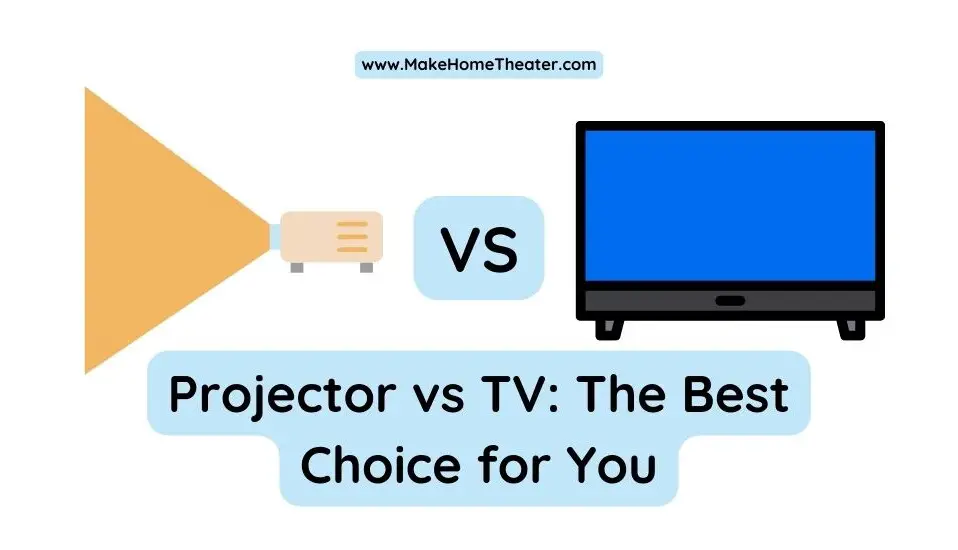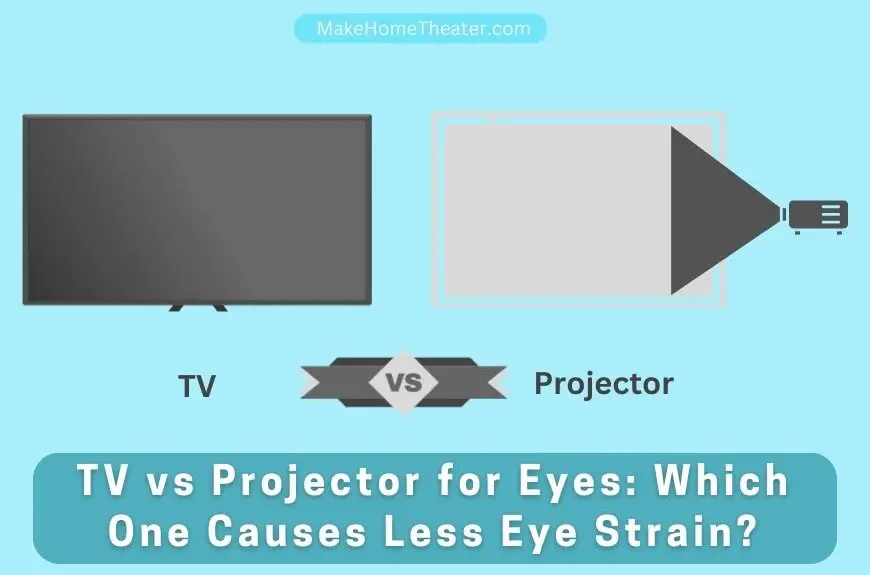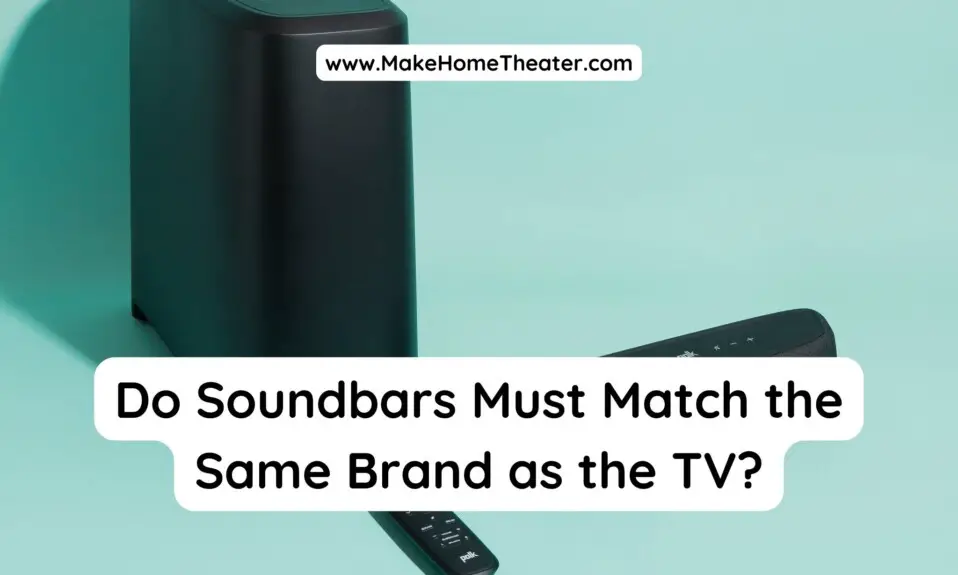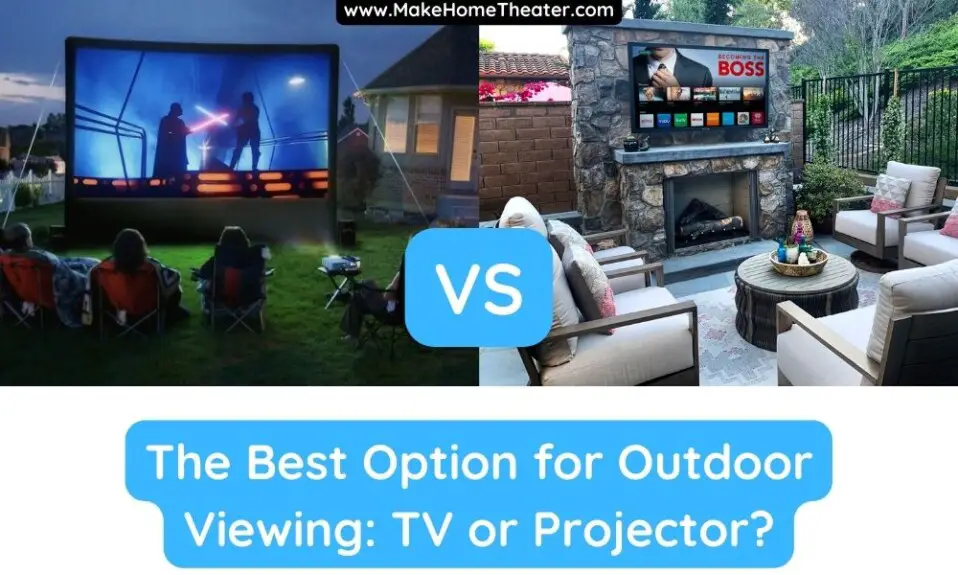Projectors offer an exceptional option for screen size, especially at their price point. A 100-inch screen projector can cost less than a 55-inch or 65-inch television. But, how do projectors perform with normal everyday TV watching, such as cable-TV sitcoms and favorite news channels?
Using a projector for everyday TV watching is absolutely possible, and it won’t damage the projector (though it may decrease the bulb’s lifespan). In fact, it may provide a better overall TV-watching experience at a lower price-point than larger TVs.
Moreover, owning a projector is an undeniable flex, as it allows you to disregard the latest technology trends. While projectors may be expensive, they are not more expensive than even the largest TV. They also offer a wow-factor that can transform any space. However, it’s worth discussing some of the pros and cons in detail, including the fact that projectors are much better for your eyes than traditional TVs, as we explained in our guide.
Pros and Cons of Using a Projector for Everyday Viewing
Using a projector for everyday viewing can be a great or not so great idea, depending on various factors. One important consideration is the location of the room in which the projector will be used. Additionally, the people who will be watching also play a role in determining the feasibility of this idea.
Pros
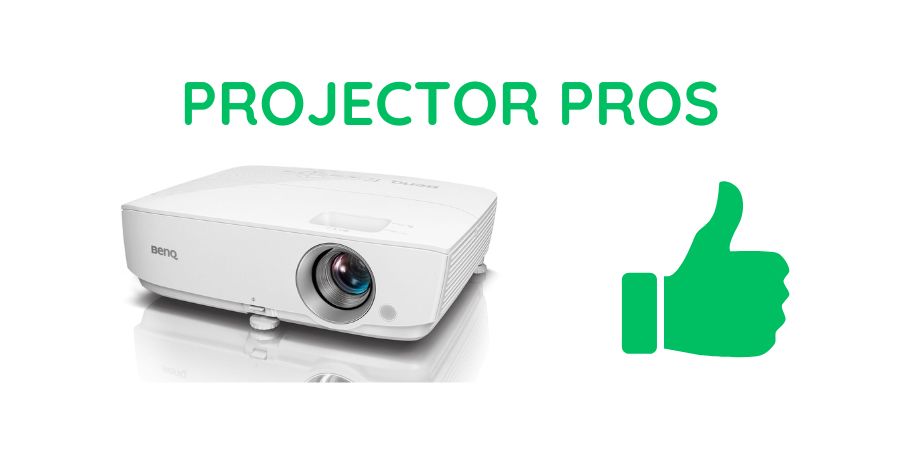
Large-television options cannot deny the undeniable price advantage
At the time of writing, Amazon’s best-selling and largest TV is the LG 86UM8070PUA 86″ 4K Ultra HD Smart LED TV(on Amazon), which comes with a hefty price tag of almost two thousand dollars. Undoubtedly, this TV delivers impressive performance and image quality.
However, it’s worth noting that this TV is still 14% smaller than a 100-inch screen, which is something to consider if you’re looking for a truly immersive viewing experience. In this case, projectors have the clear advantage, and they come at a much lower cost.
For example, the XGIMI H2 4K Smart Projector (on Amazon) costs less than half the price of the 86″ LG TV and is designed for an incredible 300-inch diagonal projector screen.
If your main goal is a large screen, a projector is the way to go. Check out some of our recommended projectors here, but keep reading to weigh the pros and cons.
Impressive User Experience
There’s no denying that a big screen can make video content more compelling, whether it’s news, sitcoms, or a blockbuster movie. Watching your “normal” content on a huge screen can transform the experience and make it feel more engaging. It can take a weekly ritual of watching your favorite shows and elevate it to something more substantial.
In addition to the immersive experience, a surprising advantage of a larger screen is that it’s easier on the eyes. This is because the screen takes up more of your visual field, mimicking the way light works in the real world. If you’re someone who watches a lot of TV and suffers from eye strain, switching to a projector might actually alleviate those issues.
Cons
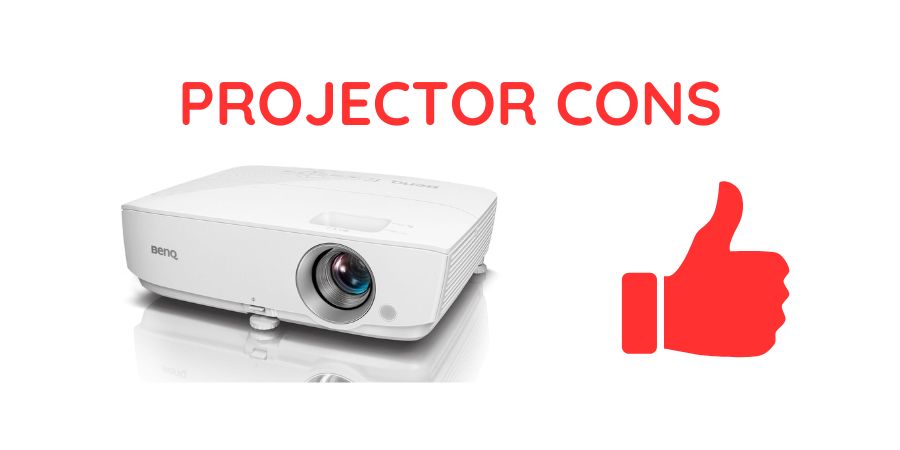
The higher operating costs of projectors are primarily driven by the lifespan of the bulb.
Typical projector bulb lives last around 2000 hours, which can quickly add up if you use the projector for everyday TV watching. For example, if you’re the type to leave the TV on in the background during your morning routine and again all evening, you could potentially be running the projector for 8 hours a day, which equates to 2000 hours after just 250 days – not even a full year.
However, the projector industry, especially high-end projectors like the XGIMI H2 mentioned earlier, are transitioning from traditional low-life incandescent bulbs to long-lasting LED lamps. This significant change increases the lamp-life by an order of magnitude. The XGIMI H2, for instance, boasts a lamp life of 30,000 hours of use. At 8 hours per day, that’s an impressive 10 years of use. So, if you opt for an LED-powered projector, the potential “con” of a short bulb life becomes irrelevant.
There may also be another hidden advantage – projectors are likely to be cheaper to run compared to a television. To learn more about this, check out our article here.
Getting your TV onto your projector can prove to be a difficult task.
Streaming services that run as apps or streaming sticks typically have simple solutions for getting content on your projector. Whatever device you’re using to run your setup, whether it’s a computer or an Xbox, you can usually download Netflix or Hulu and start streaming.
However, for traditional TV feeds that you buy from a cable company, there may be a few more hurdles to overcome. If your cable box needs to be connected to an Ethernet or cable jack, placement becomes an issue. If you put the cable box at the projector, you’ll need to run the cable line to that spot.
Alternatively, if you put the cable box near the jack, you’ll need to run HDMI from the projector back to that spot. A wireless HDMI kit could be a handy solution, or your provider may offer a wireless cable box. Nevertheless, if you want to watch normal TV on your projector, you’ll need to consider this extra step.
More Complicated Audio Setup
While TVs usually have built-in speakers that are adequate for most uses, projectors are not known for their sound quality. In the rare cases where projectors do have built-in speakers, they are often subpar, producing tinny highs and weak bass. Unlike a TV, a projector lacks the physical width to accommodate separate left and right speakers. Furthermore, projectors are typically ceiling-mounted, meaning that the built-in speakers are far from the viewing area and won’t provide optimal sound.
Therefore, if you want high-quality audio when using a projector, you’ll need to address this issue separately. This is not a concern when using a TV, where sound is built-in and ready to go.
Conclusion
In conclusion, using a projector for everyday TV viewing can be a great option, as it provides a more immersive and engaging experience with a larger screen size. It can also be easier on the eyes, especially if you suffer from eye strain while watching TV. However, there are some considerations to keep in mind, such as the lifespan of traditional projector bulbs, the need for a separate audio system, and the potential difficulty of setting up traditional cable TV feeds.
Related Q&A

Q1: Can a projector be used for daily TV watching?
A: Yes, a projector can be used for everyday TV viewing.
Q2: How does a projector compare to a traditional TV?
A: Projectors can offer a larger screen size than most traditional TVs.
Q3: Are projectors more expensive than traditional TVs?
A: Projectors can be more expensive than traditional TVs, but prices have decreased in recent years.
Q4: Can a projector provide a high-quality picture?
A: Yes, many projectors offer high-quality images with good color accuracy and contrast.
Q5: Is it necessary to have a dedicated room for a projector?
A: No, projectors can be used in any room with minimal setup.
Q6: Do projectors require a lot of maintenance?
A: Projectors do require occasional maintenance, such as bulb replacement, but this is relatively simple.
Q7: Can projectors be used in bright rooms?
A: Projectors can be used in bright rooms, but a darker room will provide a better viewing experience.
Q8: Are projectors compatible with streaming services?
A: Yes, most projectors can connect to streaming services like Netflix or Hulu.
Q9: Can a projector replace a traditional TV?
A: Yes, a projector can replace a traditional TV for daily viewing, but it may not be ideal for everyone.
Q10: What are some benefits of using a projector for TV watching?
A: Benefits of using a projector for TV watching include larger screen size, a more immersive viewing experience, and the ability to easily move the projector to different locations.



